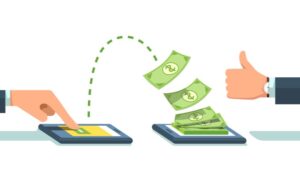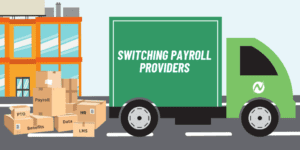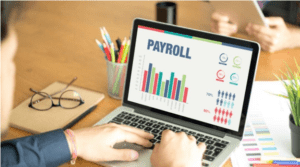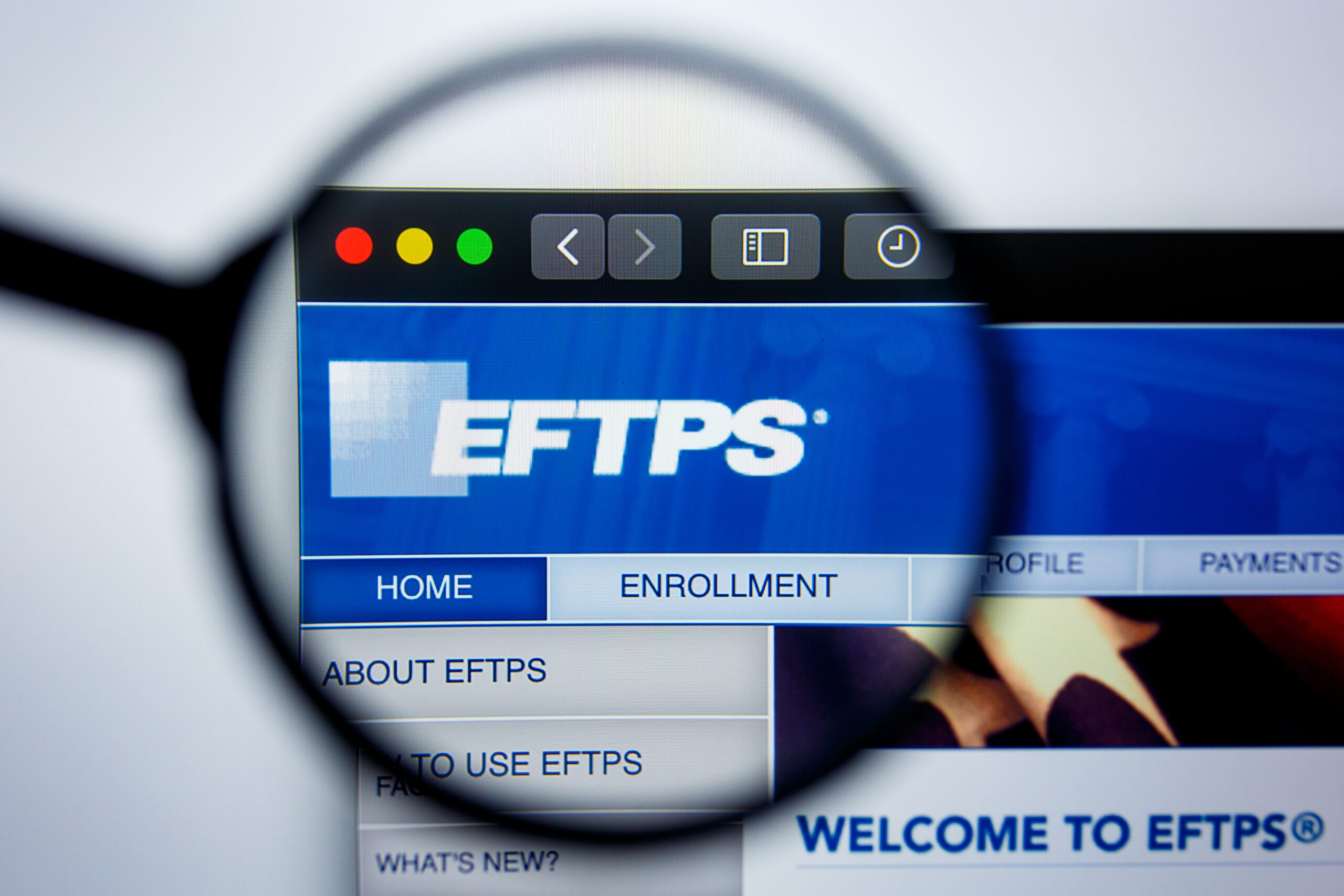Share
Have you ever felt like business taxes should be easier to pay and manage online? The Electronic Federal Tax Payment System (EFTPS) is a free government tool for efficiently scheduling payments. The U.S. Department of the Treasury provides EFTPS as a secure way to send tax payments to the IRS any time. Not just during business hours, EFTPS is active 365 days a year and 24/7.
What is the Electronic Federal Tax Payment System (EFTPS)?
The Electronic Federal Tax Payment System (EFTPS) replaced an older electronic payment system called TaxLink in the mid 90’s. EFTPS uses direct debit payments from your company’s bank account. It allows you to schedule payments in advance and modify those scheduled payments if circumstances change.
Several types of taxes are commonly paid through ETTPS:
Estimated Taxes
The IRS may charge a late fee for those who miss quarterly payments. You may need to pay estimated taxes in either of the following circumstances:
- If you expect your withholding and refundable credits to be less than either 100% of your previous year’s taxes or 90% of your current year’s taxes
- If you expect to owe $1,000 or more to the IRS
Payroll Taxes Withheld from Employee Paychecks
Withholdings might include Medicare, Social Security, federal income tax, and unemployment.
LLC or Corporate Taxes
After filing forms 1065, 1120, or 1120S, an LLC or Corporation may need to make EFTPS payments.
Excise Taxes
These might be withheld when customers purchase certain goods and services, like tobacco, alcohol, and gasoline.
Personal Income and Self-Employment Taxes
After you file Form 1040 as an individual, you may need to make payments with EFTPS.
Who uses EFTPS and why?
Over 12 million groups and individuals use EFTPS. Those groups include businesses, nonprofits, and other government organizations. Corporations must pay taxes electronically, but smaller businesses and individuals have a wider range of options. An individual might be able to use checks, money orders, or even cash to pay the IRS. EFTPS is free, convenient, and secure, making it the preferred alternative for most business owners.
EFTPS simplifies payment, but it does not tell you exactly how much to pay. Professional tax services can help you make the right calculations and complete paperwork. In the past, one of the biggest dangers of EFTPS has been phishing scams. Outside of the federal portal, EFTPS users received fraudulent emails asking them to confirm their tax login information. If your business is Cyber Ready, then your staff shouldn’t be tricked into clicking on hyperlinks in suspicious emails.
Benefits of EFTPS
On behalf of workers who have taxes withheld from their paychecks, Chris Rock observed, “You don’t pay taxes–they take taxes.” The corporate perspective is a little more complicated, but taxes are still mandatory. When you can choose between different ways of paying taxes, it’s worth considering the benefits of EFTPS:
Accessible Anywhere
From any location with internet access, you can log on to EFTPS.gov and pay your taxes. That said, rather than a public, unsecured Wi-Fi connection, it’s better to use your home, your office, or another trusted network.
Security
EFTPS has made cyber security a high priority. You’ll use three-step authentication, including a government-issued PIN, your self-created password, and an 18-digit enrollment number.
Convenient Scheduling
Your account is accessible 24/7 throughout the calendar year. You can schedule payments up to a year in advance.
Confirmations
Get notifications after each payment. Email comes through immediately. Snail mail takes longer.
Payment History
You can choose to print payment receipts. By calling customer service or checking online with your PIN, you can review the past 16 months of payments.
Accuracy
Specified payments are removed as scheduled, not adjusted by the government. You can change or cancel your own scheduled payments.
Multiple Types of Taxes
You can pay income, employment, estimated, and excise taxes. Multiple types of federal taxes can be managed conveniently with EFTPS.
EFTPS vs. Direct Pay
The IRS Direct Pay is exclusively for individuals, not business taxes. Individual taxpayers can use Direct Pay for payments applied to form 1040 taxes, civil penalties, and retirement plans. Businesses do not have the option to use the IRS Direct Pay system.
Faster without Enrollment
For individuals making a single payment, Direct Pay quickly allows you to skip the five day enrollment and registration process of EFTPS.
No Saved Information
EFTPS enrollment saves your information like account numbers. Direct Pay requires you to re-enter identifying information and payment methods.
Only 30 Day Scheduling
Your one Direct Pay payment must be scheduled within a 30 day window. EFTPS supports multiple payments within a year.
(Slightly) Limited Access
EFTPS provides 24/7 access, but the IRS warns that Direct Pay “outages may occur.” Direct Pay is unavailable from 11:45 p.m. to midnight Eastern Time as well as Sunday mornings before 7 a.m..
(Slightly) Limited Payments
Direct Pay cannot be used for more than two payments in a 24-hour period. The IRS warns that each payment must be less than $10 million, which would be an unusually large tax payment for the individuals we know.
Are you an individual who needs to send more than $10 million to the IRS at exactly 11:50 p.m. Eastern Time? Probably not. Direct Pay is adequate for individuals making one-off payments to the IRS, but businesses don’t have that option. For self employed workers and those who want to schedule quarterly payments in advance, EFTPS offers a lot more options and convenience.
Before you can send payments, you need to ensure payroll accuracy, including withholdings. The right payroll software can make those calculations more efficient and reliable. Compared to the hassle of compliance issues and fines, payroll and tax software can save money for many businesses.
Discover how Netchex can help your business improve your payroll process, including tax administration:
You can choose your own payment schedule, whether it’s monthly, quarterly, or semi-weekly. Just ensure you meet IRS requirements.
Yes, if you’re required to use EFTPS and don’t, you may face penalties. It’s essential to comply with IRS regulations.
Visit the EFTPS website, enroll, and follow the prompts to make your payments electronically.
EFTPS is the Electronic Federal Tax Payment System, a secure way for individuals and businesses to pay federal taxes online.
EFTPS can be used for a variety of federal tax payments, including income taxes, employment taxes, and excise taxes.
Yes, EFTPS is an official service provided by the U.S. Department of the Treasury for electronic tax payments.
For some businesses and individuals, EFTPS is mandatory. If you meet IRS criteria, you’re required to use this system.
Anyone who is required to make federal tax payments should use EFTPS. This includes businesses, corporations, and certain individuals.
Industry news & tips sent straight to your inbox!
Enter your email below to subscribe to industry news, product updates, and tips.
Related articles

Payroll Management

Show Me the Money: Earned Wage Access Explained

A Comprehensive Guide to Switching Payroll Providers

